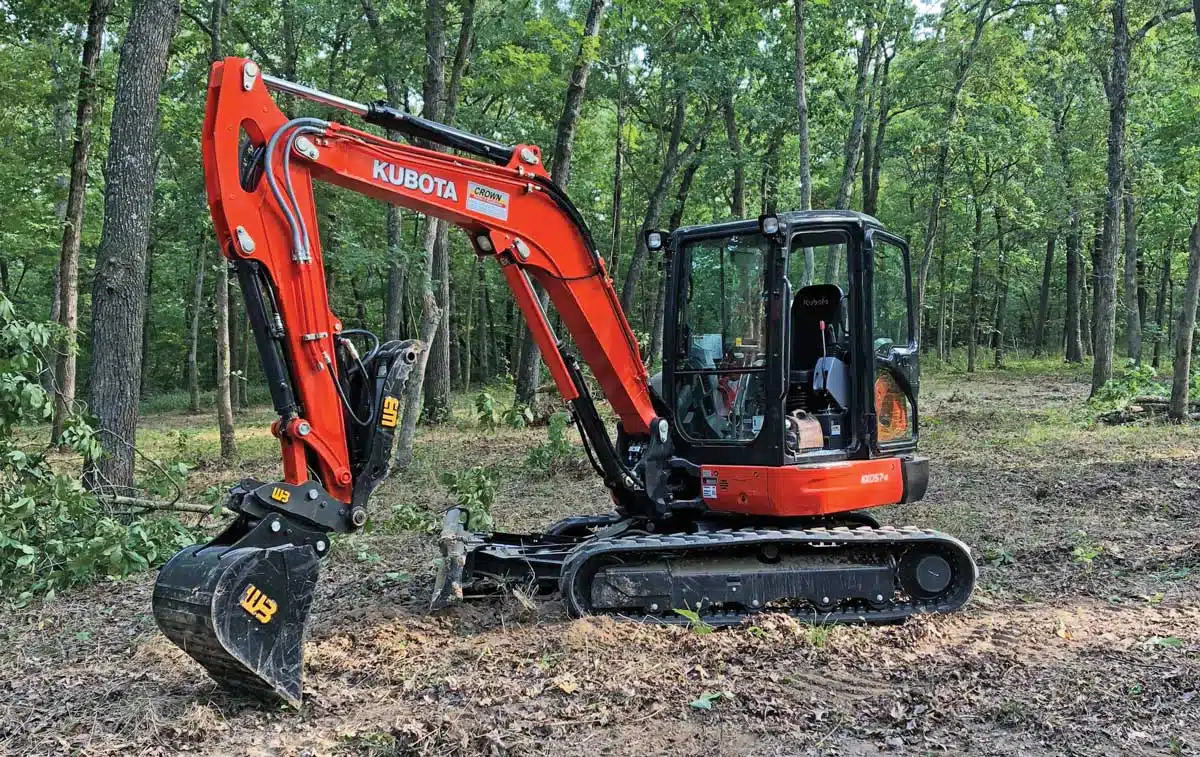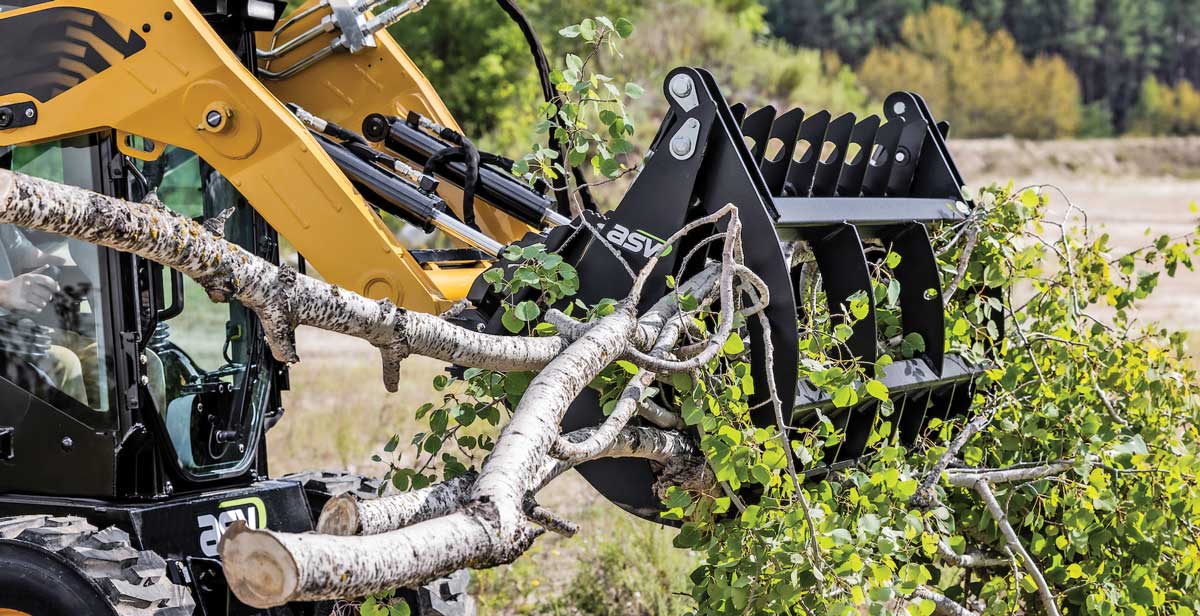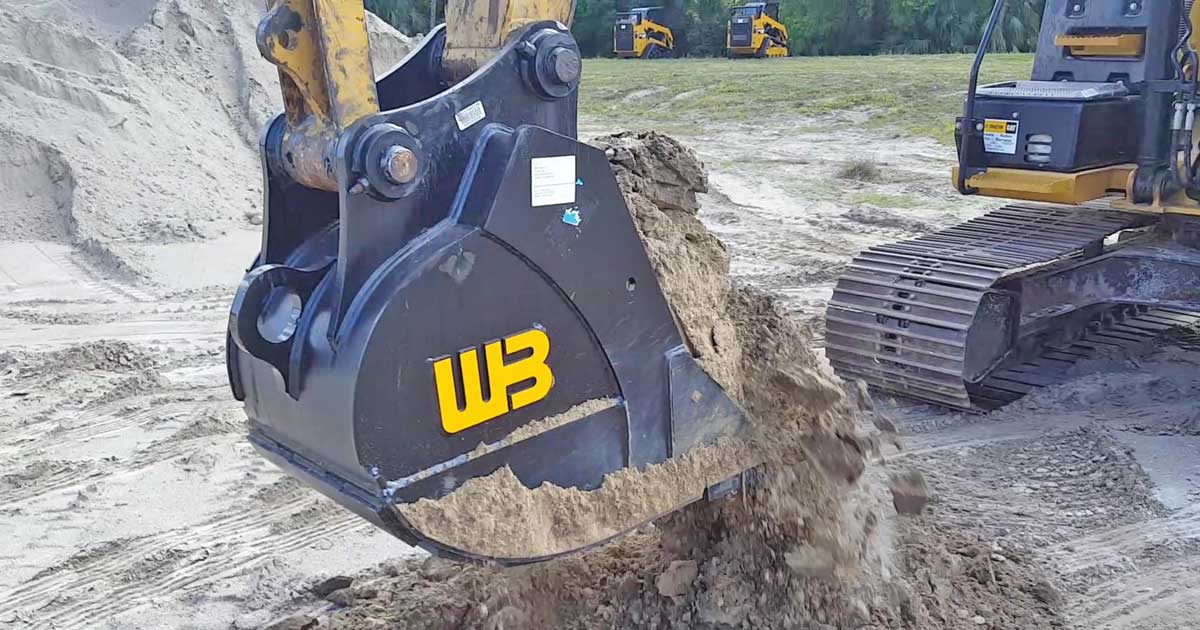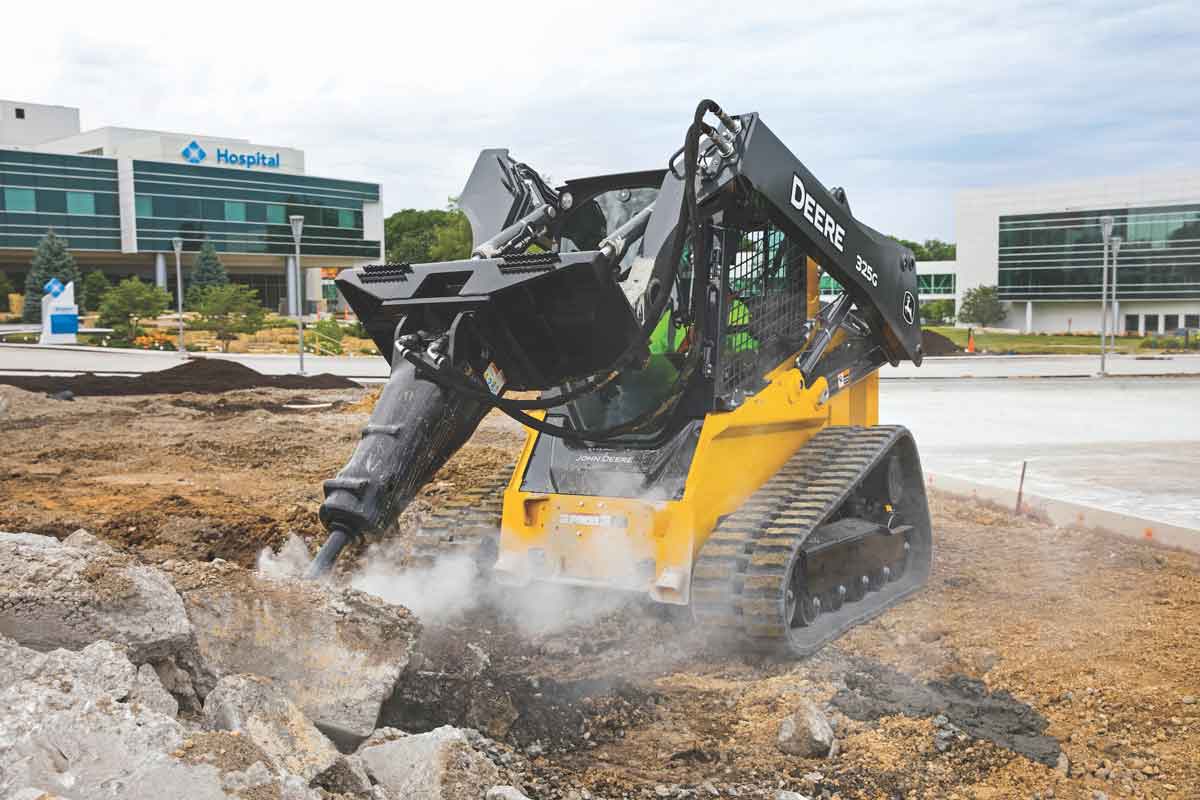Couplers and Thumbs and Buckets, Oh My! Here’s a Quick Guide to Compact Excavator Attachments

Compact excavators are among the most popular and fastest-growing classes of excavators. With a wide range of attachments available, these workhorses are viewed as the Swiss army knife in many equipment arsenals. That coupled with easy transportability makes these versatile tools a go to for many contractors, enabling them to work year-round and embark on a wide range of projects.
There are a few basic rules that will help compact excavator users get the most out of their equipment attachments. While there are a lot of attachments available, they likely differ in how they are manufactured. Seemingly slight design changes can have an impact on how the attachment performs. Tapered side plates can facilitate easier dumping without shaking the bucket, which is easier on all of the components. If the bucket for an 8-ton excavator has the same frame as the bucket for a 5-ton excavator, that may work out ok for the smaller machine but could lead to early failure for the larger unit. Digging into these details upfront can keep you digging at the jobsite later, where it is most important.
When reviewing equipment, keep Occam’s Razor in mind — the simplest solution is often the best solution. Attachments with fewer components are generally easier to maintain and have fewer potential points of failure, whereas attachments that require more components to actuate have more potential points of failure.
Maintenance is an area that takes a modest amount of time but yields huge dividends in terms of attachment longevity. Adhere strictly to the manufacturer’s suggested maintenance, grease the zerk fittings regularly and you will be rewarded with good performance and longer service life.

Power-Grip type attachments exert three times the holding force of a standard thumb for more precise material handling.
Watch Your Weight
Couplers, thumbs and attachments certainly add to the utility of the excavator but be cognizant of the weight that you are adding to the end of the machine. Counterweights may need to be added to allow safe operation of the equipment. These are easily added by the local dealer or in the field. Another option you might consider is downsizing to a smaller, lighter attachment to limit the added weight. Now let’s look at some specific attachments.
Couple Up
A quick-coupled D-lock coupler is commonly used to enable fast, reliable and safe switch overs between attachments. Safety is paramount, so ensure that the unit locks when the front pins are engaged even though the rear pin may not be secured, and that the unit is designed to eliminate accidental releases. A coupler with multi-pin centers and multi-pin diameters allows the coupler to pick up all attachments in the same weight class even though they have different pin diameters. Simple installation is desirable, as is easy maintenance, and maintenance-free is even better. Compact design is also important, as this is the first of the components that you’ll be adding to the excavator stick, so a more compact design keeps the attachment closer. This can be especially important when adding a tilt coupler, which greatly enhances the functionality, but which also puts the attachment even further away from the machine. Tilt couplers allow the attachment to be tilted without moving the machine, so that slope work on trails, golf courses and other projects are more easily accomplished.
Tool Time:ASV Launches a New Line of Branded Attachments Matched to Its Machines

The ASV-branded attachments include a full range of buckets, pallet forks, grapples and brush mowers.
ASV finished 2021 with a bang by introducing its own line of branded attachments tested for use on the company’s machines in late December. The ASV-branded attachments include a full range of buckets, pallet forks, grapples and brush mowers, with each attachment type available for every machine in ASV’s lineup. Contractors benefit from being able to work with an ASV dealer as a single point of contact for a comprehensive package of ASV equipment and attachments, as well as the confidence that the tool is tested to ensure maximum efficiency with their equipment. The attachments, available through ASV’s dealer network, are tested for use with ASV machines. This allows operators to simply attach the tool and get to work with the confidence to get the job done. Plus, the attachments feature a 24-month warranty, providing additional peace of mind with parts and support available directly from ASV. For more info, visit asvi.com.
Nothing to Thumb Your Nose at
Main pin hydraulic thumbs are ideal for handling or loading irregular shaped objects, debris, rocks or other items that cannot be handled by a bucket alone. You’ll want one that retracts against the stick when not in use, and that can be left on the machine during normal excavation projects. Most manufacturers also offer two-, three- or four-tine versions to suit particular applications.
Check One Off the Bucket List
Buckets are the most common compact excavator attachment, with most manufacturers offering models for standard conditions, heavy-duty versions and then those for extreme environments. Regardless of the model, ensure that high strength (or better yet T-1) steel is used in critical and high-wear areas, with the option of adding wear straps along the bucket bottom. A design that includes tapered side plates and dual taper radius reduces wear and makes dumping easier. Most use industry standard teeth and offer options.
In addition to standard bucket designs, many manufacturers have designs to suit unique applications, including ditching/grading buckets designed specifically for ditch maintenance, grading, slope work and construction. Hydraulic tilting grading buckets are available, which tilt to 45-degrees in either direction, adding more versatility to grading operations. These models add tilting capability to the grading bucket without the need for a tilt coupler.
For ditch work of a desired depth and slope, look for trapezoidal V Ditch Buckets where the long side cutting edges grade the slope as it digs. Ensure that T-1 steel is used in critical and high wear areas.
Skeleton rock buckets are available to sort rocks, debris and other larger items from smaller loose materials like soil or debris.
Integrated Material Handling
While thumbs are very useful in many instances, some manufacturers offer buckets with integrated, rotary actuated thumbs which exert consistent clamping force on the load throughout the entire bucket rotation. These versions weigh less than traditional bucket-and-thumb combinations and provide increased flexibility and precision. Bucket or rake models allow for the easier handling of brush or debris.
For applications which require even more thumb pressure, Power-Grip type models are available which exert three times the holding force of a standard thumb along with 120-degrees of jaw movement. This allows these unique buckets to perform more precise material handling applications like boulder placement. Two different cutting edges within one bucket allow the operator to switch from grading to digging without changing buckets.

Buckets are the most common compact excavator attachment, with most manufacturers offering models for standard conditions, heavy-duty versions and those for extreme environments.
Let ‘er Rip
Working year-round means working in frozen soil. So, the use of rippers or frost buckets helps contractors work with frozen ground, pavement or tough soils that exceed a bucket’s recommended duty. A ripper’s single point tooth style penetrates various tough environments, including removal of stumps, roots and rebar. Make sure that the ripper is made of T-1 steel and supported by rigid gussets for a long service life.
When excavating in frozen ground or layered rock, a V-shaped bucket exerts all of its force at a single point. When selecting V-shaped buckets, ensure that T-1 steel is used for critical and high wear areas, that steel walls are thicker than normal buckets and that oversized cutting edges are used. Tapered side plates will reduce wear and make dumping easier.
That’s How We Roll
Wheel compactors compact fill material as it is being back filled and are available in various widths from many manufacturers. Ensure that high strength steel is used throughout and that the individual wheels are replaceable.
With the wide range of attachments available, it is easy to see why compact excavators are so popular, especially the 5-ton models that can be most easily transported. Reviewing the attachment designs and construction details ahead of time can ensure a long service life. Being aware of the weight of the attachments and adding counterweights to the machine can ensure safe and efficient operations. When in doubt, consult the manufacturer and your local dealer, because while this may be new to you, its likely not their first rodeo.
Alex Andrews is a product manager at Werk-Brau.




